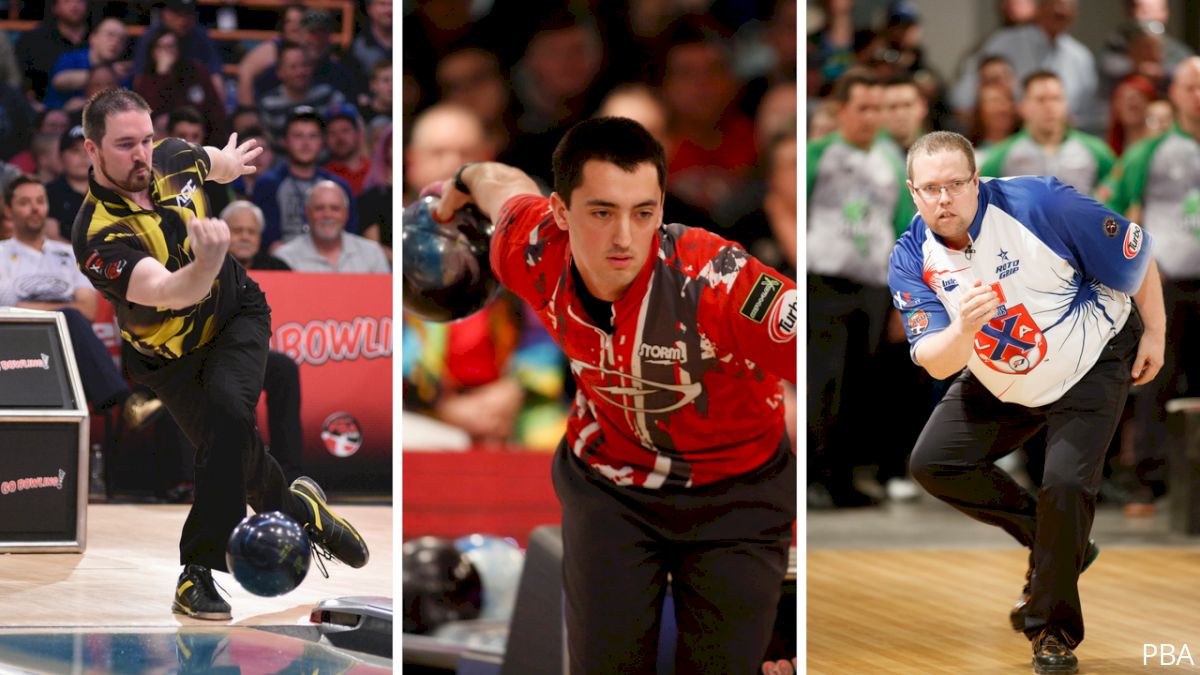PBA Players React To Major Changes In U.S. Open Lane Conditions
PBA Players React To Major Changes In U.S. Open Lane Conditions
Following a social media storm last year, the U.S. Open will undergo major changes to lane conditions the world's best will face this year.

Following a social media firestorm last year, the U.S. Open will undergo major changes to the lane conditions the best players in the world will face.
Instead of bowling on one pattern with fresh, burn and double burn squads, all rounds will be contested on fresh conditions using four different lane patterns during the 2018 U.S. Open, which will take place Oct. 26-31 at Northrock Lanes in Wichita, Kansas, and be broadcast live on FloBowling.
Last year, bowling’s social media groups lit up with feedback after videos emerged of players forced to loft the ball past the arrows or throw backup balls to deal with the double-burn condition.
In an announcement in July, the United States Bowling Congress said a different pattern will be used during each round of qualifying and a fourth pattern will be used for the cashers’ round, match play and stepladder finals. The patterns will be announced on site prior to practice sessions.
Using four patterns mimics what the Professional Bowlers Association has used for the World Series of Bowling in recent years. Qualifying for the 2017 PBA World Championship, which like the U.S. Open is a major, was contested on four distinct patterns.
Four-time PBA champion Marshall Kent, who admits he “loves to loft” more than anyone, welcomed the changes to the U.S. Open.
“I like the test of multiple pattern events,” Kent said. “I don't have the highest rev rate or ball speed, so whenever the patterns make you get creative with the way that you shape the ball and which ball you do it with, I feel like I have a much better chance.”
Sean Rash, who has 12 PBA titles to his credit including two majors, said had the double burn squad remained in 2018, he was planning to skip the event.
“I was definitely one who was against the double burn squad and have been for a couple years,” Rash said. “I just don’t consider it bowling. It’s not shot making, it’s luck of the draw and everyone knows if you bowl the first double burn squad that you have a better draw because as the week goes on, people start farther and farther left and never give any thought to moving right at any point.”
Rash said he welcomes the changes, but the reality is that no matter what pattern or patterns are put out for an event like the U.S. Open, it always favors the best players.
“At the end of the day, the cream always rises to the top, and the better shot makers and better spare shooters find a way to survive,” Rash said. “If you use one pattern, normally whoever figures it out the first day kind of gets to do the same thing in Day 2 and Day 3 even though it will change a little bit. So, I don’t think you’ll have one guy run away with it this year.”
In addition to the announcement about lane conditions, USBC also revealed bowlers will be limited to a maximum of 10 bowling balls. Prior to the cashers’ round or the stepladder, they will be able to make changes to their ball cards.
England’s Stuart Williams, who has two career PBA titles, said it will be important for players to focus on which bowling balls they will use.
“You have to spend more time on your arsenal as four different patterns can really stretch your choices,” Stu Williams said. “Having balls that will work on multiple patterns is now more important than the perfect reaction, so to speak.”
Williams said he found the changes to be neither positive nor negative but simply require a different mindset entering the competition.
“I like being able to bowl one pattern and figure it out over three different blocks, but I’ve also had success in the World Series style format that this is using,” Williams said. “It’s just a different mindset knowing which days to be aggressive and which days to be more circumspect and take what’s being given. Usually with four patterns there will be one you really like and one you really don’t. The key is often taking as big of an advantage of the pattern you really like.”
One thing Williams said concerns him about the four-pattern setup is that significantly more games will be played on the fourth pattern, creating an advantage for whomever matches up best to that pattern.
Each of the first three patterns will be used for just one round of qualifying, which consists of eight games. The fourth pattern will be used for 32 games, combining eight in the cashers round with 24 games of match play, plus all games played during the stepladder finals.
“I would like to have seen the leader be able to choose which pattern we use in the match play part of the event,” Williams said. “I feel like whoever likes pattern four will have a big advantage now, as there will be four times more games on that pattern than any other.”
Bowlers will get to practice on all four patterns in advance of the event with two practice sessions lasting three hours each. It’s during those practice sessions that the players will determine their game plan for the week and figure out which balls to choose to give them the best shot to advance past qualifying.